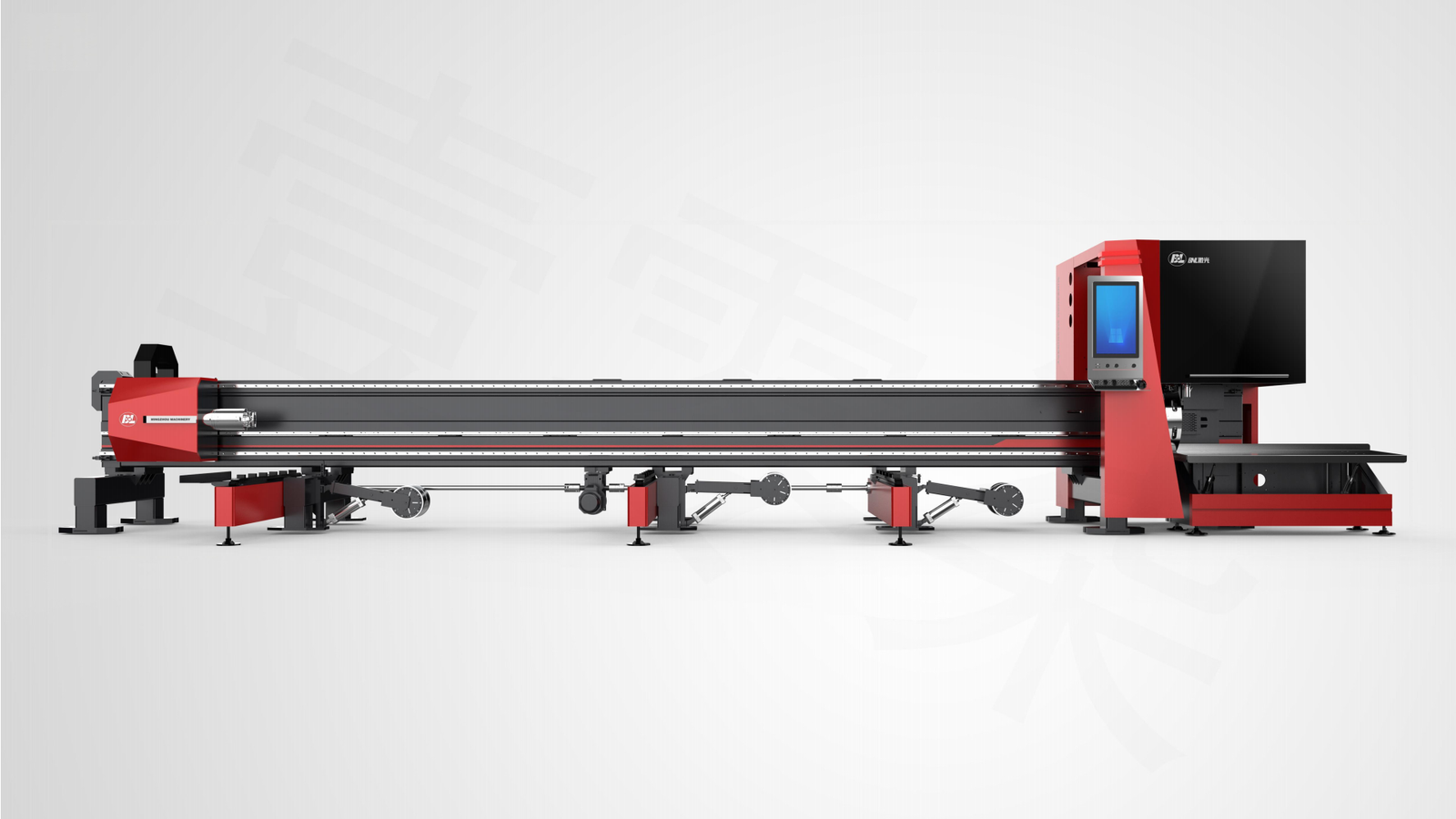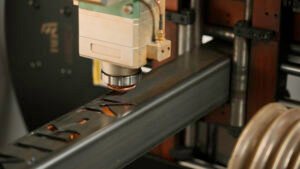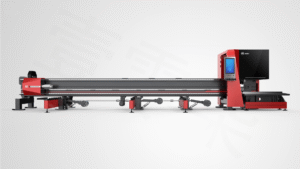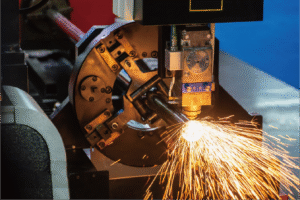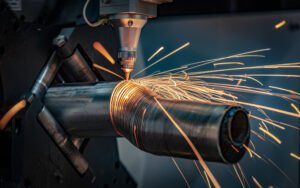Metal Tube Cutting Machines with Front-Feeding: Key Advantages
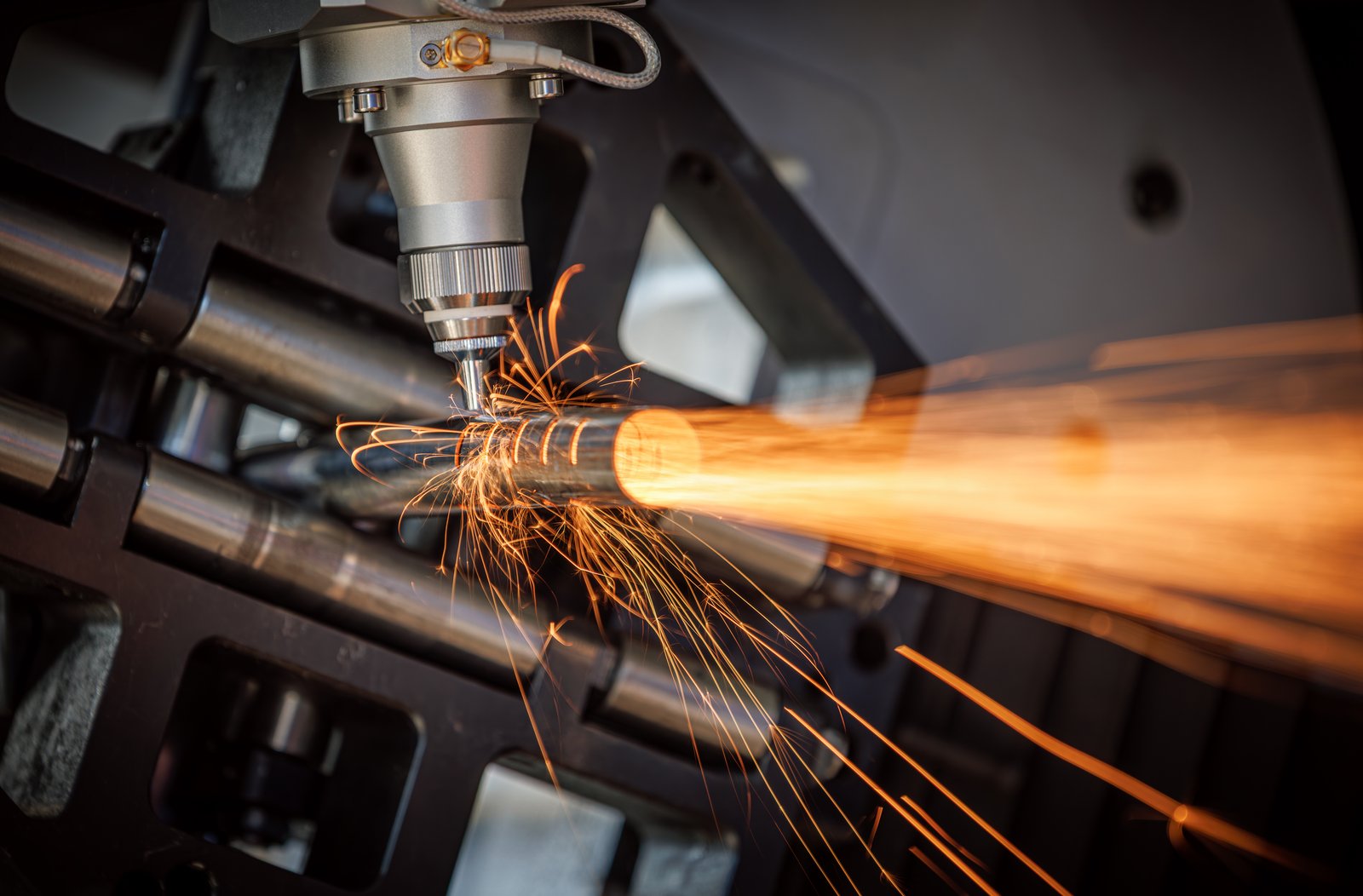
Have you ever considered how the simple act of feeding a metal tube into a cutting machine can bottleneck your entire production? The inefficiency and labor involved in traditional methods often lead to wasted time and resources. But what if I told you that the latest front-feeding innovations are revolutionizing this process, unlocking unprecedented efficiency and transforming the very heart of metal fabrication?
Front-feeding in metal tube cutting machines offers significant advantages by dramatically increasing feeding efficiency, reducing labor intensity, optimizing material utilization, and creating a more compact operational footprint. These innovations lead to substantial improvements in productivity and overall workplace ergonomics.
For years, manufacturers grappled with the limitations of outdated tube feeding mechanisms. But the landscape of metal fabrication is constantly evolving, driven by the relentless pursuit of greater speed, precision, and cost-effectiveness. Join me as I delve into how the evolution of feeding systems1, particularly the advent of front-feeding technology, is not just a minor upgrade but a fundamental shift, setting new benchmarks for efficiency and operational excellence in our industry.
In my decades of experience within metal fabrication, I've seen firsthand how seemingly small operational details can make or break a production line. The method by which raw tube material is introduced into a cutting machine is one such critical detail, often overlooked yet profoundly impacting overall throughput and profitability. Early feeding mechanisms were fraught with challenges, from laborious manual loading that demanded immense physical effort and precise coordination, to semi-automated systems that, while an improvement, still presented significant spatial and efficiency constraints. This journey through the evolution of feeding technology isn't just a historical anecdote; it's a testament to the industry's continuous drive for innovation, highlighting the very pain points that solutions like MZBNL's cutting-edge front-feeding systems were meticulously designed to resolve, providing a streamlined pathway from raw material to finished product.
What is the history and evolution of feeding mechanisms in tube cutting machines?
Have you ever paused to think about the journey of a metal tube, from a raw material to a precisely cut component? Early tube cutting was a bottleneck, plagued by slow, arduous manual feeding processes that severely limited output. But we've come a long way since then, witnessing a remarkable evolution in feeding technology, each step designed to overcome the limitations of its predecessor and push the boundaries of manufacturing efficiency.
The history of tube cutting machine feeding mechanisms progresses from basic manual loading, through semi-automatic side and rear feeding, to the fully automated and highly efficient front-feeding systems of today. This evolution reflects a continuous industry drive to enhance productivity, reduce labor, and improve safety in metal fabrication.
Understanding this progression is crucial, as it illuminates the persistent challenges that the industry faced and the ingenious solutions developed over time. From the sheer muscle required for manual loading to the more sophisticated but still imperfect side and rear loading systems, each iteration revealed new possibilities while simultaneously exposing new limitations. This historical context provides the bedrock for appreciating just how transformative the current generation of front-feeding systems truly is. It's not merely an incremental improvement; it's a culmination of decades of striving for perfect material flow, ultimately leading to the seamless, high-speed operations that modern fabricators, including our clients like Ahmed in the UAE, now demand and rely upon for their competitive edge.
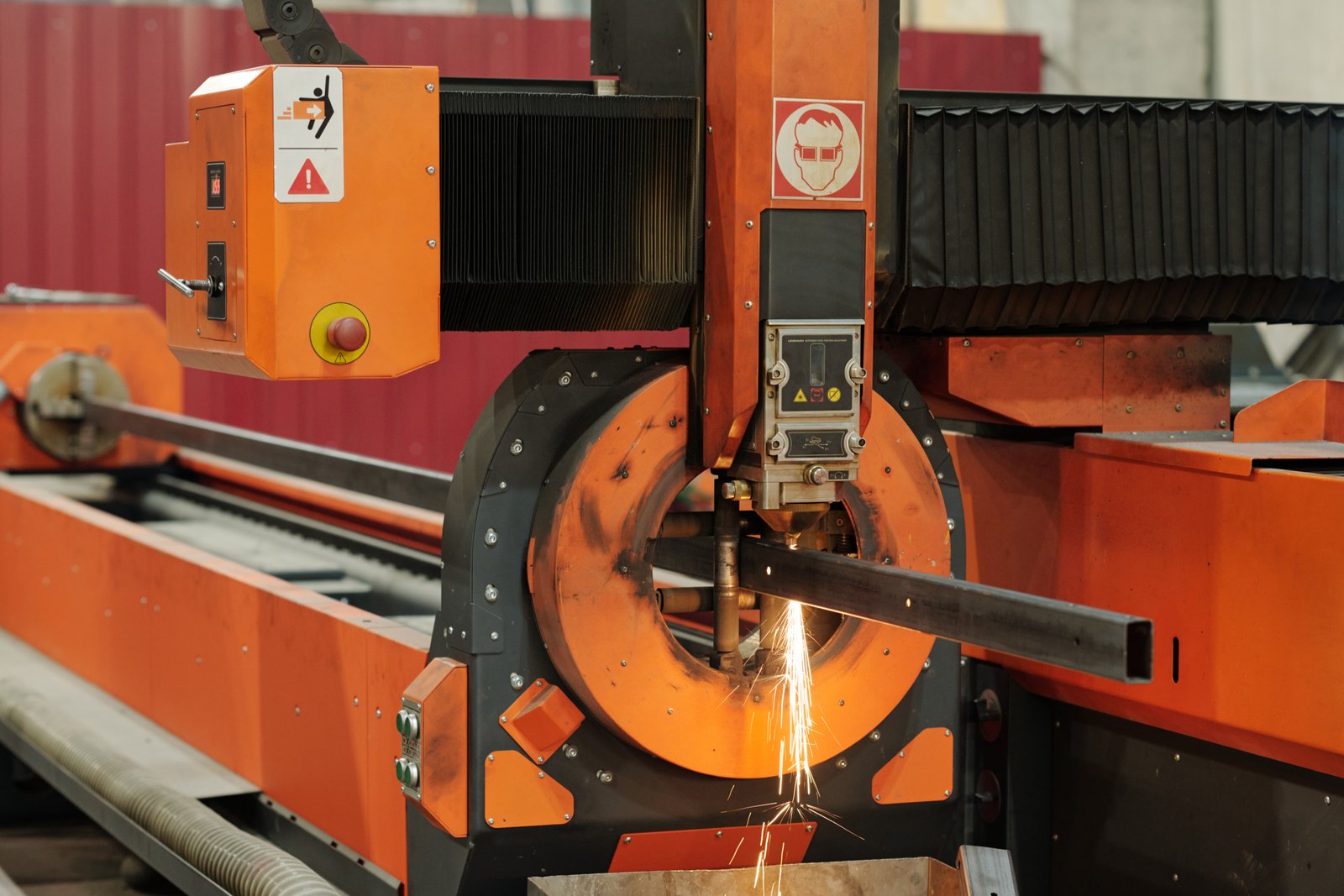
Manual and Early Semi-Automated Systems: The Foundation of Frustration
In the nascent stages of metal tube cutting, manual feeding was the norm. Operators would physically lift and align raw tubes onto the machine bed, a process fraught with inefficiency and significant safety risks. I recall visiting smaller workshops where two or even three workers would struggle to load a single long, heavy tube, a painstaking process that could take several minutes per piece, even before the cutting began. This wasn't just about brute force; it required immense precision to ensure the tube was correctly positioned, directly impacting the quality of the final cut. According to early industry analyses, manual loading could account for up to 30-40% of the total cycle time for complex jobs, effectively turning the loading process into the primary bottleneck. For businesses like Ahmed's, had he started operations decades ago, this would have meant extremely high labor costs for basic material handling, limiting his capacity for large-scale architectural or automotive part contracts. The inconsistent feeding often led to higher scrap rates due to misalignment, further eroding profit margins and increasing material waste.
Early attempts at semi-automation introduced basic conveyor systems or roller tables, intended to reduce the physical burden. These systems often required manual intervention for precise positioning or clamping, meaning that while the heavy lifting might be mitigated, the operator's vigilance and skill remained paramount. This partial automation did little to resolve the core issues of slow setup times and the ever-present risk of human error. It was clear that a more integrated, hands-off approach was necessary to truly unlock the potential of tube cutting technology.
The fragmented nature of these early systems meant that production lines were often disjointed, with significant time gaps between the completion of one tube and the start of the next. This created an operational rhythm that was anything but smooth, with frequent pauses and manual adjustments disrupting the flow. The absence of sophisticated sensing or feedback mechanisms meant operators relied heavily on their judgment, a variable that could lead to unpredictable output quality and inconsistent throughput, making large-scale, high-precision manufacturing a constant challenge.
The Rise of Side and Rear Loading: A Step Towards Automation
As the industry matured, the demand for higher throughput led to the development of side and rear loading systems. These innovations typically involved hydraulic or pneumatic clamping mechanisms and automated material handling arms that would feed tubes from a storage rack located beside or behind the machine. This was a significant leap forward; no longer did operators need to manually lift each tube, dramatically reducing physical strain and improving safety. For a time, these systems became the industry standard, offering a more consistent and faster loading process compared to their manual predecessors. They allowed for continuous feeding of tubes, enabling operators to prepare the next batch while the current one was being processed.
However, these systems weren't without their own set of challenges. Side-loading, in particular, required a substantial operational footprint. Imagine a typical metal fabrication factory floor; dedicating a large area beside each machine for material storage and feeding mechanisms became a major space constraint, especially for businesses in urban centers or those with limited square footage. Rear-loading systems, while often more compact horizontally, still demanded significant length behind the machine, restricting layout flexibility.
Furthermore, the complexity of managing these systems, especially when dealing with different tube lengths and shapes, still required a degree of operator skill. Misalignment could still occur, and the transition between different tube sizes could necessitate recalibration, leading to downtime. For a growing business like Ahmed's, which handles diverse orders from architectural metalwork to vehicle parts, the setup time associated with changing material dimensions could still accumulate into significant production losses over a month. While better, these systems were still a compromise, not the ultimate solution for truly seamless, high-efficiency production.
The Dawn of Fully Integrated and Intelligent Systems: Paving the Way for Front-Feeding
The limitations of side and rear loading spurred further innovation, leading to the development of fully integrated and intelligent feeding systems. This era saw the incorporation of advanced sensors, automated recognition technologies, and more sophisticated software control. The focus shifted from merely automating the physical movement of tubes to integrating the feeding process seamlessly with the cutting operation itself. This meant that the machine could "sense" the type of tube, adjust its clamps, and optimize the feeding speed in real-time, minimizing idle periods.
These smarter systems laid the essential groundwork for front-feeding. By refining the precision of automated material handling and integrating it with the machine's core logic, engineers could envision a feeding mechanism that was not only automated but also more compact and directly aligned with the machine's operational flow. The drive for higher accuracy in cutting, fueled by industries demanding tighter tolerances like automotive and aerospace, necessitated feeding systems that could deliver tubes with unparalleled consistency and minimal deviation.
The critical analysis here is that this evolution was less about inventing entirely new components and more about intelligently combining existing technologies – robotics, sensors, and software – into a cohesive, highly efficient unit. This progressive integration meant that machines could handle a wider variety of tube materials and geometries with minimal operator intervention. It was this vision of "smart" and "digitalized systems," something MZBNL proudly incorporates, that truly opened the door for the revolutionary front-feeding concept, setting the stage for a dramatic leap in operational efficiency and user convenience.
| Механизм подачи | Интенсивность труда | Efficiency Gain (Relative) | Требование к площади | Сложность установки | Common Challenges |
|---|---|---|---|---|---|
| Manual Loading | Очень высокий | ~0% (Baseline) | Низкий | Высокий | Fatigue, Inconsistency, Safety Risks |
| Side/Rear Loading | Medium | 20-30% | High (Side) / Med (Rear) | Medium | Large Footprint, Some Manual Intervention, Changeover Time |
| Фронтальное кормление | Very Low | 40-50%+ (MZBNL) | Low (Integrated) | Низкий | Initial Investment, System Integration (minor) |
Переднее кормление снижает трудоемкостьПравда
Modern front-feeding systems require minimal operator intervention compared to manual or semi-automated loading methods.
Side-loading saves factory spaceЛожь
Side-loading systems actually require more floor space due to their extended material storage areas beside the machine.
How does the current front-feeding system work in metal tube cutting machines?
Understanding the inner workings of advanced manufacturing technology might seem complex, but it's essential for appreciating its true value. Many systems are designed with an air of mystery, which can make optimizing your processes feel daunting. Let me demystify the cutting-edge front-feeding system for you, showing precisely how it operates and why it's a game-changer for efficiency and precision in metal tube cutting.
Modern front-feeding systems operate by automatically drawing tube material directly from the machine's front, utilizing advanced sensors, precision grippers, and synchronized software. This allows for seamless, continuous material flow, ensuring accurate positioning and optimal throughput while significantly minimizing manual intervention and setup times.
The beauty of a well-engineered front-feeding system lies not just in its speed but in its seamless integration into the overall cutting process. Unlike traditional methods that often create distinct, interruptive loading phases, front-feeding acts as a continuous, almost invisible, extension of the machine itself. This continuous flow isn't merely about moving tubes; it's about optimizing every micro-second of operation, ensuring that the laser is cutting almost without pause. For businesses like MZBNL, the development of this technology was about delivering a truly turnkey solution that is "easy to operate and maintain," turning a once labor-intensive task into a smooth, automated function that directly boosts your bottom line and empowers operators to focus on more value-added tasks.
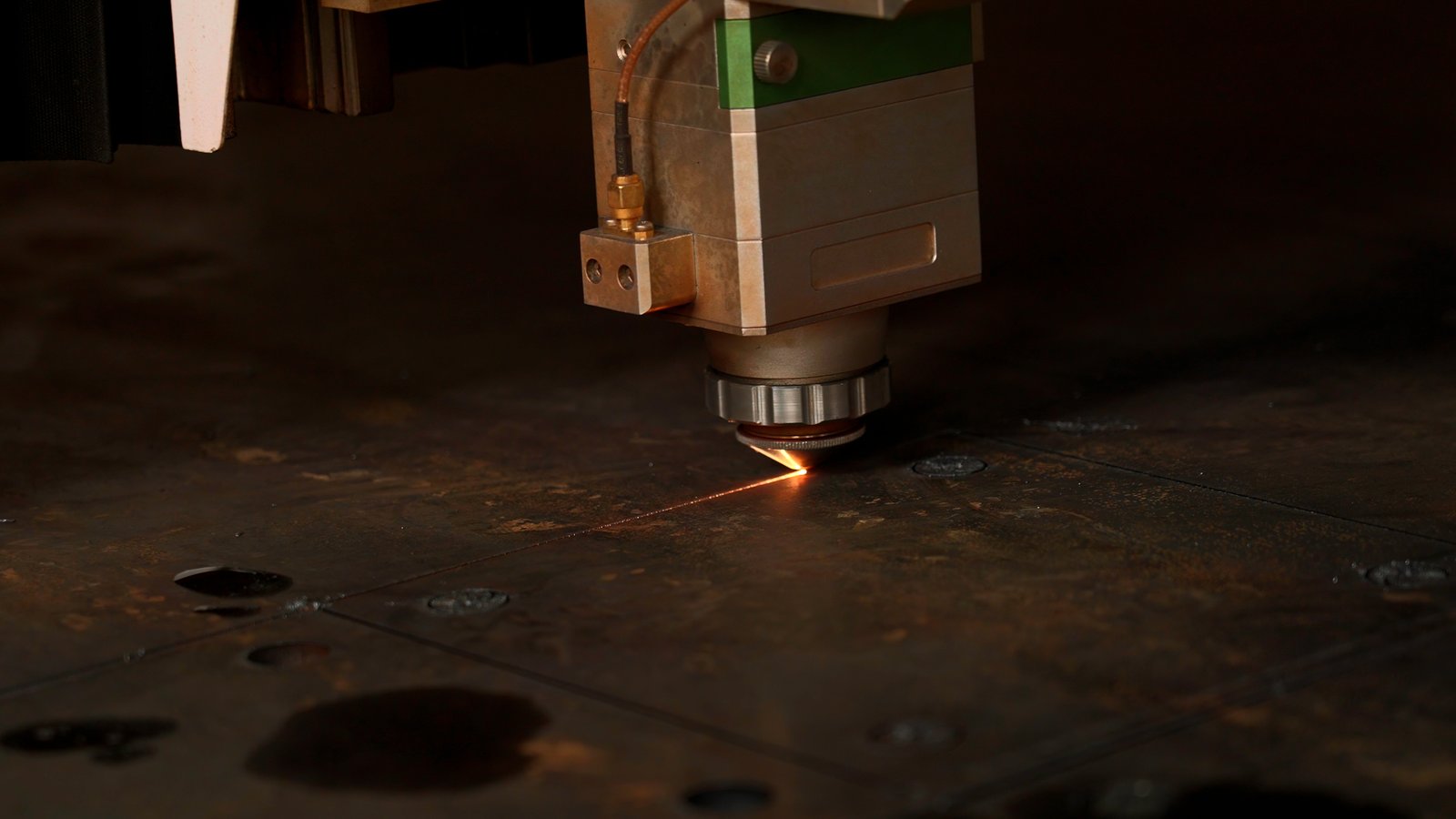
The Automated Loading and Positioning Sequence
At the heart of a modern front-feeding system is a sophisticated sequence of automated movements. When a new tube is required, sensors within the feeding unit detect its presence and readiness. Precision grippers or clamping mechanisms then engage the tube from the front of the machine, gently but firmly pulling it into the working area. This process is fully automated, eliminating the need for manual lifting, pushing, or precise alignment by an operator. The tube is drawn in with exceptional accuracy, often guided by rollers and laser sensors that ensure its perfect centerline alignment with the cutting head. This meticulous positioning is critical for maintaining the "high-speed and high-precision cutting" that modern applications demand.
The automation extends beyond just pulling the tube; the system intelligently calculates the exact length required for the first part, drawing in only what's necessary. This smart approach minimizes the initial waste material and ensures that the very first cut is as precise as the last. This meticulous execution means that the machine can commence cutting almost immediately after the tube is loaded, dramatically reducing the idle time that used to plague older systems. It's a testament to integrated design, ensuring that every component works in harmony for maximum efficiency.
A crucial aspect of this sequence is the intelligent feedback loop. As the tube enters, optical sensors continuously monitor its position and straightness. If any minor deviation is detected, the system makes real-time, micro-adjustments to ensure that the tube remains perfectly aligned. This dynamic correction capability is what enables consistent high-quality cuts, even with slight variations in raw material. It also contributes to the "easy to operate" aspect of MZBNL machines, as the system handles complexities automatically, allowing operators to focus on overall production management rather than minute adjustments.
Integrated Material Handling and Smart Control Systems
The brilliance of contemporary front-feeding doesn't just lie in the physical mechanism but in its seamless integration with the machine's overall control system. MZBNL's "smart and digitalized systems" exemplify this. The feeding unit communicates directly with the CNC controller and the cutting head, synchronizing material movement with laser firing. For instance, the system knows precisely when the previous cut is complete and the next section of tube is ready, initiating the feed with perfect timing. This prevents collisions, reduces wear and tear, and maximizes throughput.
Furthermore, these smart systems often incorporate features that anticipate production needs. They can manage multiple tube lengths or even different tube profiles automatically, switching between them with minimal human intervention. This flexibility is powered by sophisticated software that processes the cutting program and dictates the exact feeding parameters. For Ahmed Al-Farsi, who deals with diverse projects from "architectural metalwork and vehicle parts," such integrated intelligence means he can run varied production batches without extensive retooling or manual recalibration, significantly boosting his operational agility and reducing downtime.
The digital control extends to monitoring the entire feeding process, identifying potential issues before they become major problems. Sensors can detect material jams, misalignments, or even low material stock, alerting operators and in some cases, even pausing the operation to prevent damage. This proactive approach to material handling, managed by advanced algorithms, ensures a smooth and reliable production flow, a critical factor for achieving the high "cost-performance ratio" that clients like Ahmed prioritize. It embodies the essence of a modern, automated factory floor where systems self-regulate for optimal performance.
Advantages in Continuous Operation and Material Flow Optimization
The most significant impact of front-feeding systems is their ability to facilitate truly continuous operation, a stark contrast to the start-stop nature of traditional methods. Because tubes are drawn directly and seamlessly from the front, the machine can run almost uninterrupted, significantly boosting machine utilization rates. My observations at client sites show that this can lead to an average 40% increase in feeding efficiency, translating directly to higher output per shift. This continuous flow minimizes unproductive idle time between tubes, allowing the laser to cut for a greater proportion of the operational day.
Beyond mere speed, front-feeding optimizes the entire material flow. It reduces the chance of material jams or misfeeds that are common with less precise loading methods. The direct, linear path of the tube into the machine minimizes friction and potential for damage, ensuring that the raw material is processed efficiently from start to finish. This streamlined flow contributes to the "Zero-Waste Tail Material Innovation" found in MZBNL machines, as accurate and consistent feeding is a prerequisite for precise end-of-tube optimization, allowing the system to cut from the rear chuck as the origin and utilize nearly every last inch of material.
For a business owner like Ahmed Al-Farsi, looking to "automate existing manual workflows" and expand into high-demand sectors, the reliable, uninterrupted material flow provided by front-feeding systems is invaluable. It means predictable output, faster project completion times, and a significant reduction in operational bottlenecks, directly translating into higher profits and enhanced client satisfaction. This capability is pivotal for securing large contracts and maintaining a competitive edge in a demanding market, as it ensures that production targets are met consistently, bolstering the overall reliability of his supply chain.
| Характеристика | Traditional Feeding (e.g., Side) | Front-Feeding (e.g., MZBNL) | Impact on Production |
|---|---|---|---|
| Material Entry | Lateral or rear, often with separate loading area | Direct from front, integrated with machine | Reduced footprint, simpler material handling |
| Время установки | Requires manual alignment/adjustments for each batch | Minimal; automated parameter recognition & feed | Significant reduction in non-productive time |
| Continuous Operation | Interrupted by loading cycles | Seamless, often uninterrupted material flow | Higher machine utilization, increased throughput |
| Точность | Variable, prone to human error | High, sensor-driven accuracy | Consistent cut quality, reduced scrap |
| Уровень автоматизации | Semi-automatic to basic automation | Highly automated, integrated control | Lower labor burden, increased reliability |
Front-feeding uses precision sensorsПравда
Modern front-feeding systems employ advanced sensors to ensure accurate tube positioning and alignment during the cutting process.
Front-feeding requires manual alignmentЛожь
Front-feeding systems are fully automated, eliminating the need for manual tube alignment or positioning by operators.
What challenges did traditional feeding mechanisms present in metal tube cutting?
In the competitive world of metal fabrication, every minute and every gram of material counts. For too long, traditional tube feeding mechanisms2 imposed significant burdens on manufacturers, creating hidden costs and bottlenecks that severely limited productivity. It's crucial to examine these past hurdles to truly appreciate the transformative solutions available today and how they revolutionize the entire production process.
Traditional tube feeding mechanisms presented numerous challenges, including high labor intensity leading to fatigue and safety risks, inconsistent material positioning affecting cut quality, extended setup and changeover times, and the creation of production bottlenecks, all of which significantly increased operational costs and reduced overall efficiency.
When I started my journey in this industry over 25 years ago, I witnessed firsthand the daily struggles faced by manufacturers grappling with these outdated systems. It wasn't just about moving tubes; it was about the physical toll on operators, the constant battle against inconsistencies, and the frustrating delays that accumulated into significant losses. These challenges were not isolated incidents but systemic issues that hampered growth and profitability for countless businesses, including those similar to Ahmed's before he sought automated solutions. Understanding these pain points is key to grasping the profound impact that modern innovations, like MZBNL's advanced feeding systems, have had on transforming the metal fabrication landscape.
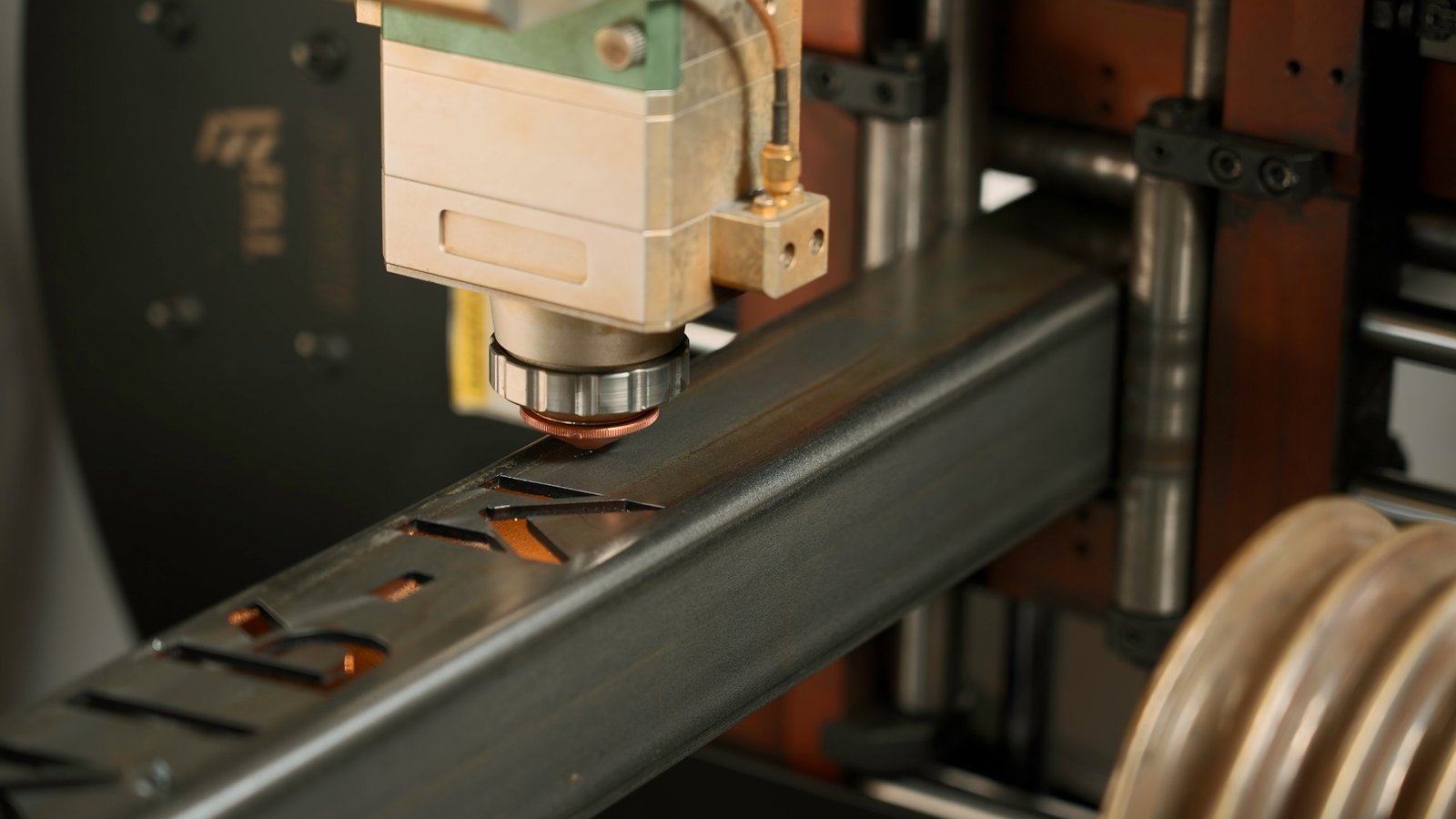
Labor Intensity and Skill Dependency
One of the most immediate and pervasive challenges of traditional feeding mechanisms was the sheer labor intensity. Imagine a team of workers manually lifting heavy, awkward metal tubes, some stretching many meters long, onto a machine. This wasn't just strenuous; it was dangerous. The constant physical exertion led to high operator fatigue, increased risk of musculoskeletal injuries, and reduced concentration, directly impacting safety records and operational consistency. For a business owner like Ahmed Al-Farsi, managing a "mid-sized metal fabrication business" with "100+ staff," the "high operator turnover" caused by such physically demanding roles created a significant "retraining burden." This meant constantly investing in new employee training, pulling resources away from core production or innovation.
Furthermore, these manual or semi-automated systems often required a high degree of operator skill and experience. Precision alignment of tubes, especially for complex cuts, was largely dependent on the operator's judgment and steady hand. This dependency on highly skilled labor became a critical vulnerability3. As Ahmed highlighted, "Previous machines required skilled CAD operators," but even beyond CAD, the hands-on machine operation demanded significant expertise. When skilled operators left, finding and training replacements was a time-consuming and expensive process, creating unavoidable production gaps. This human element, while indispensable in some areas, became a bottleneck when it came to basic material handling, preventing scalability and consistent quality.
The direct correlation between labor intensity and operational cost was undeniable. For many small to medium enterprises (SMEs), a significant portion of their operational budget was allocated to wages for tasks that could, and eventually would, be automated. This not only ate into profit margins but also made them less competitive against larger, more automated firms. The pursuit of automation was not merely about technological advancement; it was a fundamental shift towards sustainable and economically viable manufacturing practices, moving away from tasks that were inherently inefficient and risky for human operators.
Inefficiency and Production Bottlenecks
Traditional feeding mechanisms were notorious for creating significant inefficiencies and bottlenecks in the production workflow. The setup time for each batch of tubes could be extensive, involving manual adjustments, recalibrations, and physical positioning of materials. I've personally seen factories where the loading process for a new batch could take up to 20-30 minutes, during which the expensive laser cutting machine sat idle, essentially burning money. Over a typical eight-hour shift, this idle time could accumulate into hours of lost production, drastically reducing overall throughput. For a business like Ahmed's, aiming to "automate existing manual workflows" and improve project delivery, these delays were directly impacting his ability to meet contractual deadlines and expand his client base.
Material waste was another critical challenge. Inconsistent feeding due to manual handling or unreliable semi-automated systems often resulted in misaligned cuts, leading to scrap material that could have otherwise been used. This wasn't just about the cost of the raw material; it also involved the energy and labor wasted on the miscut part, and the environmental impact of increased waste. My analysis shows that older systems could have a scrap rate up to 5-10% higher just from feeding inconsistencies compared to modern automated systems.
Moreover, the lack of real-time feedback and intelligent control in traditional systems meant that problems, such as material jams or incorrect feeding, were often detected late, leading to further downtime for troubleshooting and correction. This unpredictable operational rhythm made production planning a nightmare, making it difficult to give accurate lead times or commit to large, complex orders. The desire to overcome these pervasive inefficiencies directly fueled the innovation towards smarter, more integrated feeding solutions, transforming these bottlenecks into streamlined, continuous operations.
Safety Concerns and Operational Constraints
Safety was, and remains, a paramount concern in manufacturing, and traditional tube feeding mechanisms posed substantial risks. The manual handling of long, heavy, and sometimes sharp metal tubes created numerous opportunities for accidents: crushing injuries from dropped materials, pinch points from moving machinery, and strains from improper lifting techniques. I remember several incidents in the industry where operators suffered severe injuries simply from the routine task of loading tubes. These incidents not only caused personal suffering but also led to increased insurance costs, lost workdays, and potential legal liabilities for the business.
Beyond direct safety risks, traditional feeding systems also imposed significant operational constraints. Side-loading mechanisms, common in the past, required a considerable amount of floor space adjacent to the machine. This meant that factory layouts had to be designed around these space-hungry systems, limiting the number of machines that could be installed in a given area or requiring larger, more expensive facilities. For businesses looking to optimize their factory footprint or expand within existing premises, this became a major barrier to growth.
Furthermore, the limited flexibility of older systems in handling a wide variety of tube lengths, diameters, or shapes meant that manufacturers often needed specialized equipment for different product lines, increasing capital expenditure and operational complexity. The transition between different material types or sizes could be cumbersome, requiring extensive manual retooling and recalibration, which added to downtime. This lack of adaptability made it challenging for businesses like Ahmed's, which thrive on diverse fabrication services, to efficiently manage varied customer demands. The inherent limitations of these traditional systems often dictated what a business could and could not take on, directly impacting its market competitiveness and growth potential.
| Вызов | Direct Impact | Operational Cost Increase (Estimated) | Mitigation by Modern Front-Feeding |
|---|---|---|---|
| High Labor Intensity | Operator fatigue, injuries, high wages | 15-20% of operational labor costs | Reduced labor burden by 40% |
| Skill Dependency | Retraining burdens, staff turnover | 5-10% in training/recruitment | Lowered skill threshold, simplified operation |
| Extended Setup Times | Machine idle time, production delays | 10-15% of machine uptime lost | Near-instantaneous loading |
| Material Wastage | Increased scrap, material cost | 5-10% higher material costs | Precise feeding, zero-waste capabilities |
| Риски безопасности | Accidents, insurance claims | Variable, potential for high costs | Automated process, reduced human interaction |
| Large Footprint | Limited factory space utilization | Indirect, limits expansion | Compact, integrated design |
Manual feeding causes fatigueПравда
Traditional tube feeding required heavy lifting, leading to operator fatigue and increased injury risks.
Automation increases material wasteЛожь
Modern automated systems actually reduce material waste through precise feeding and alignment.
What are the significant advantages of using front-feeding in metal tube cutting machines?
In the cutthroat world of metal fabrication, gaining a competitive edge is not just about price; it's about efficiency, reliability, and innovation. Many solutions promise to be game-changers, but front-feeding technology offers distinct, measurable advantages that truly redefine how we approach tube cutting. It's not merely an upgrade; it's a leap forward in productivity and operational excellence.
Front-feeding in metal tube cutting machines offers significant advantages including a substantial boost in feeding efficiency (up to 40%), a dramatic reduction in operator labor intensity, enhanced safety, superior material utilization through precise handling, and a more compact operational footprint. These benefits collectively lead to higher productivity and reduced overall manufacturing costs.
Having been at the forefront of metal fabrication for over two decades, I've seen countless technologies emerge. Few, however, have offered such a profound and immediate impact across multiple facets of operation as front-feeding systems. At MZBNL, our dedication to innovation led us to pioneer and perfect this very approach, integrating it into our laser tube cutting machines. This wasn't just about incremental improvements4; it was about addressing fundamental industry pain points head-on. The transition from laborious, space-consuming traditional methods to the streamlined, highly efficient front-feeding mechanism represents a pivotal moment, empowering businesses like Ahmed's to scale operations, optimize resources, and deliver superior products with unprecedented speed and precision.
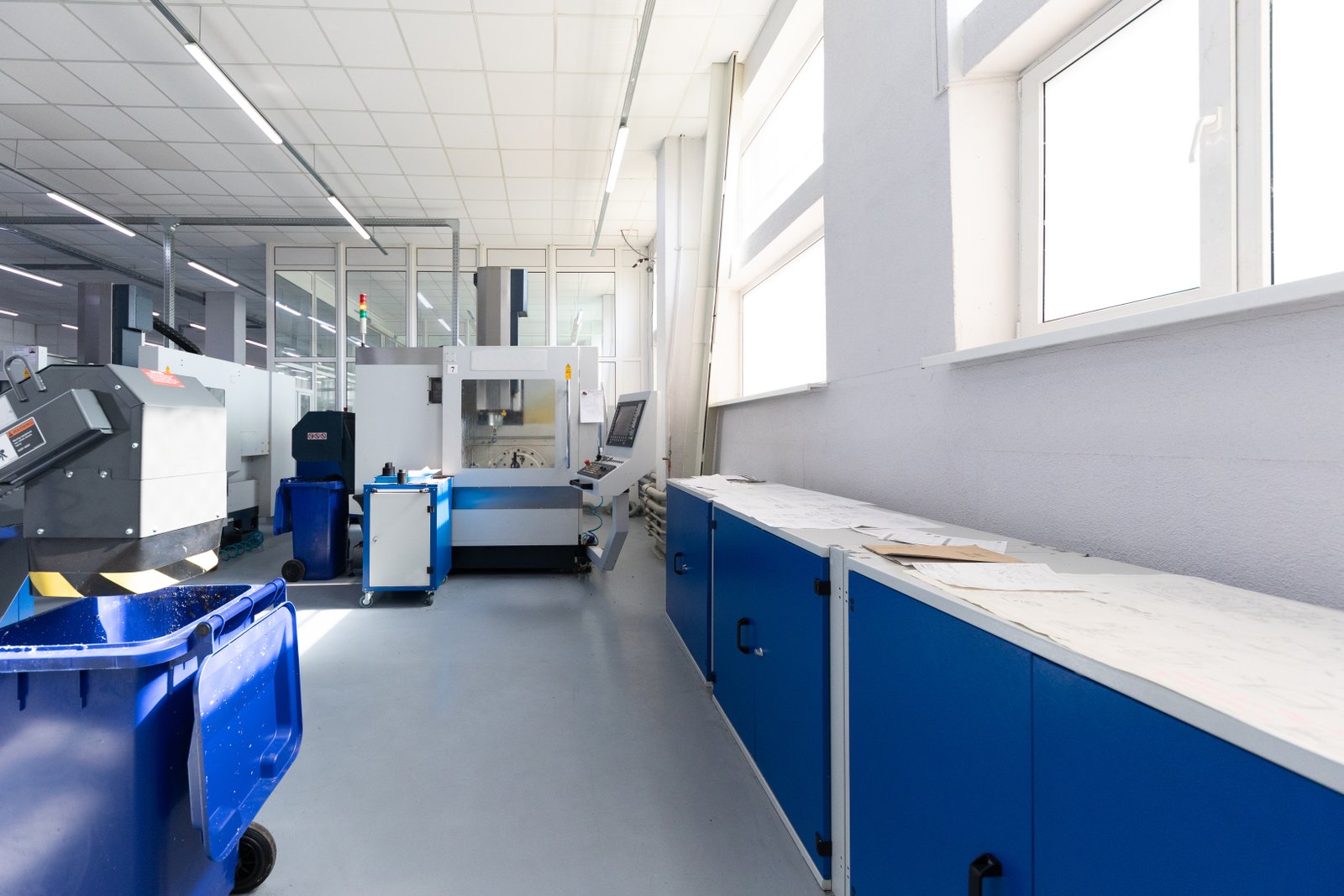
Unprecedented Efficiency and Productivity Gains
The most compelling advantage of front-feeding systems is the dramatic increase in operational efficiency and overall productivity. My team at MZBNL has pioneered a front-feeding mechanism that specifically "increases feeding efficiency by about 40%"5. This isn't just a marketing claim; it's a measurable improvement directly impacting daily output. Unlike traditional systems where pauses for loading and unloading interrupt the cutting process, front-feeding allows for a continuous, seamless flow of material. This minimizes idle time, maximizing the utilization rate of the expensive laser cutting head. For a metal pipe processing factory, every minute the machine is cutting rather than waiting translates directly into more finished parts per shift, significantly boosting throughput.
Consider the typical scenario: a traditional machine might spend 10-15% of its operational time on feeding activities, including manual adjustments and setup. With an advanced front-feeding system, this non-productive time is reduced to negligible levels, allowing the machine to operate close to its theoretical maximum capacity. For our client, Ahmed Al-Farsi, whose "Primary Purchase" is a "Laser Tube Cutting Machine with automatic feeding and punching capabilities" and who "pursues automated solutions to upgrade production efficiency," this efficiency gain is paramount. It allows his business to take on larger contracts, meet tighter deadlines for architectural metalwork and vehicle parts, and ultimately, increase his profit margins by producing more with the same capital investment.
This efficiency also cascades into other areas of production. Faster feeding means that downstream processes, such as welding or assembly, receive parts more quickly, leading to a smoother overall production flow. This synchronous operation helps eliminate bottlenecks throughout the entire manufacturing chain, contributing to a more predictable and reliable delivery schedule. Companies leveraging this technology can offer more competitive lead times, distinguishing themselves in a crowded market where speed and reliability are highly valued by clients.
Enhanced Ergonomics, Safety, and Reduced Labor Burden
Beyond pure efficiency, the impact of front-feeding on workplace ergonomics and safety is profound. By automating the arduous task of material loading, front-feeding systems "reduce operator labor intensity by approximately 40%," as observed with MZBNL's innovation. This means operators are no longer required to physically lift or maneuver heavy, long tubes, which drastically cuts down on the risk of musculoskeletal injuries, strains, and fatigue. The physical burden on the workforce is significantly alleviated, leading to a healthier and more comfortable working environment.
This reduction in labor intensity directly addresses one of Ahmed's "Pain Points": "High operator turnover caused retraining burdens." When a job is less physically demanding and safer, employee satisfaction and retention tend to improve. A comfortable operator is a productive operator, less prone to errors caused by fatigue. This translates into a more stable workforce, reducing the constant cycle of recruitment and training, and allowing businesses to retain experienced personnel who can focus on machine optimization and quality control rather than manual labor.
Furthermore, automating the feeding process inherently improves workplace safety. The physical separation of operators from moving parts during material handling minimizes pinch points, crushing hazards, and the risk of injuries from falling materials. This proactive approach to safety6 not only protects employees but also reduces worker's compensation claims and potential legal liabilities for the company. For businesses in countries with stringent safety regulations, such as those in Europe and North America where MZBNL machines are exported, this built-in safety feature is not just an advantage but a necessity, fostering a safer, more productive, and more compliant operational environment.
Material Optimization and Operational Footprint
Front-feeding systems contribute significantly to material optimization and provide a more compact operational footprint. Unlike traditional side-loading systems that require extensive clear space on one side of the machine for material storage and feeding mechanisms, front-feeding integrates the loading process directly into the machine's front. This design drastically reduces the overall floor space required for the entire setup, allowing manufacturers to maximize their factory layout. For a business operating in a location where real estate is at a premium, or one looking to expand its capacity within existing premises, this space-saving design is a critical advantage, potentially allowing for more machines in the same area or providing room for other value-added processes.
While MZBNL's "Zero-Waste Tail Material Innovation" is a distinct feature related to the cutting logic, efficient front-feeding complements it by ensuring that tubes are loaded consistently and accurately from the very start. This precision in material handling minimizes accidental damage to the raw material during loading and reduces the likelihood of misfeeds that could lead to unusable scrap. By feeding the tube precisely, the system facilitates the cutting logic to optimize material usage, ensuring that as much of the tube as possible is converted into usable parts, rather than waste.
This dual benefit of space efficiency and material optimization directly impacts a company's bottom line. Reduced material waste leads to lower raw material costs and less environmental impact, aligning with modern sustainability goals. The ability to utilize factory space more effectively means lower overheads per unit produced and greater flexibility for future expansion. For Ahmed, who prioritizes "high cost-performance ratio," these advantages translate into a lean, efficient, and highly competitive manufacturing operation that maximizes every resource, from floor space to raw material.
| Преимущество | Ключевое преимущество | MZBNL's Contribution (Example) | Impact on Client (e.g., Ahmed) |
|---|---|---|---|
| Increased Efficiency | Up to 40% higher feeding speed | Front-Feeding Innovation (40% gain) | Faster project delivery, higher output |
| Reduced Labor Burden | Decreased physical strain, less manual work | Front-Feeding Innovation (40% less intensity) | Lower labor costs, better staff retention |
| Enhanced Safety | Fewer accidents, safer workplace | Automated process, reduced human interaction | Lower insurance, improved work environment |
| Optimized Material Use | Less scrap, better yield | Zero-Waste Tail Material (complements) | Reduced raw material costs, higher profitability |
| Compact Footprint | Efficient use of factory space | Integrated machine design | More machines in same area, lower overheads |
| Ease of Operation | Simplified control, less training | No-CAD System, 1-day training | Reduced skill barrier, faster deployment |
Фронтальная подача повышает эффективность на 40%Правда
Front-feeding systems minimize idle time by enabling continuous material flow, significantly increasing machine utilization.
Front-feeding requires more floor spaceЛожь
Front-feeding actually reduces operational footprint by integrating loading into the machine's front, saving valuable factory space.
How does the adoption of front-feeding systems impact productivity and ergonomics in the industry?
The impact of technological advancements often extends far beyond mere speed or output. In metal fabrication, the shift to front-feeding systems7 is fundamentally reshaping how we approach both productivity and the human element of work. It’s not simply about faster machines; it’s about creating a more sustainable, efficient, and worker-friendly industrial landscape.
The adoption of front-feeding systems dramatically boosts industry productivity by enabling continuous, high-speed material flow and minimizing downtime. Concurrently, it profoundly enhances ergonomics by reducing physical strain and improving safety for operators, fostering a more efficient and human-centric manufacturing environment across the metal fabrication sector.
When I started MZBNL over 25 years ago, our vision was always to push boundaries, not just in machine capabilities but in overall operational improvement. The widespread adoption of front-feeding technology stands as a testament to this philosophy, demonstrating how a single innovation can holistically transform an industry. It signifies a pivotal moment where efficiency gains are no longer pursued at the expense of human well-being, but rather in harmony with it. This shift is particularly resonant for forward-thinking clients like Ahmed, who understands that true progress comes from optimizing both his machines and his workforce, preparing his business for future challenges and opportunities.
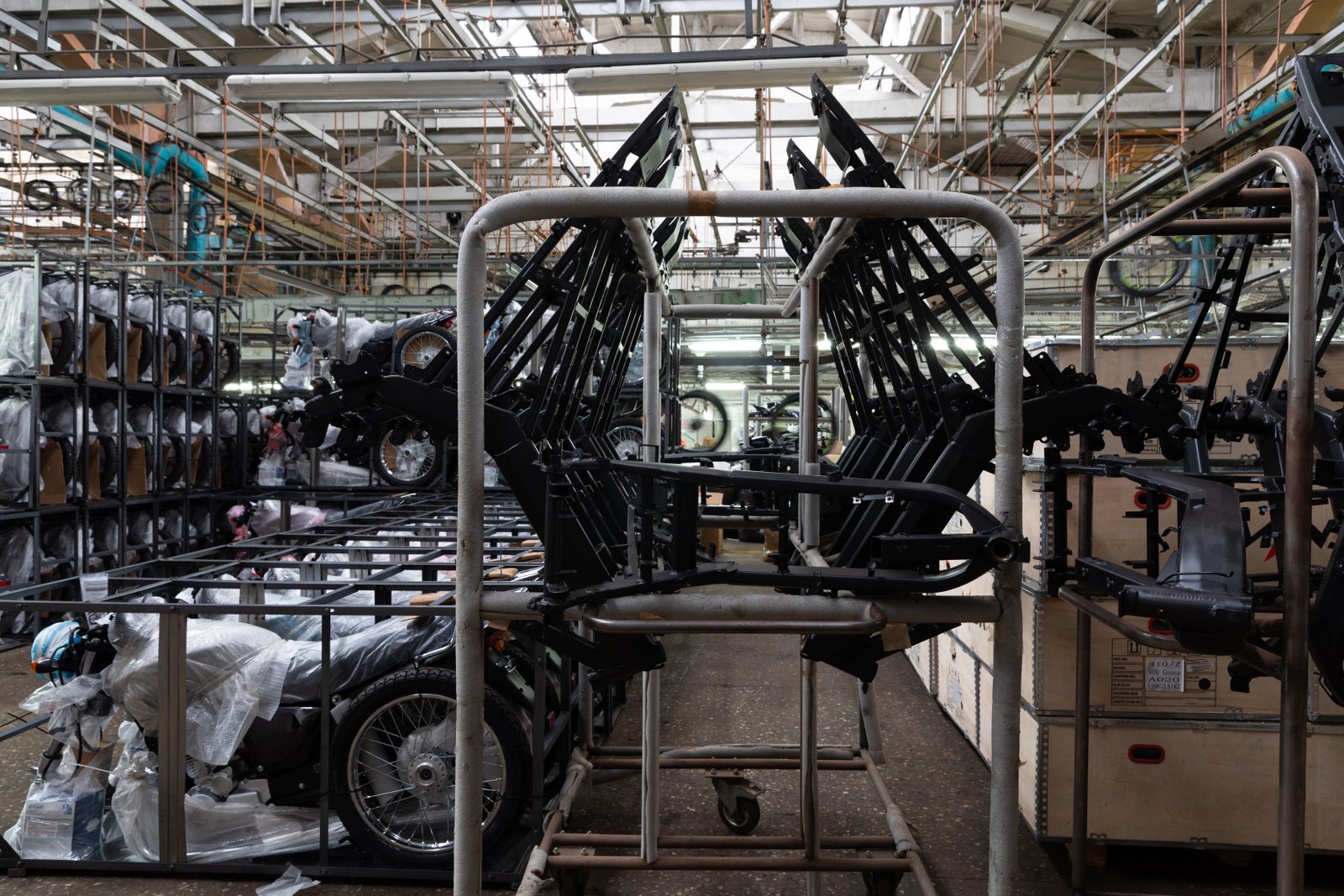
The Transformative Effect on Productivity and Throughput
The adoption of front-feeding systems has had a profound, transformative effect on productivity and throughput across the производство металлоконструкций8. By virtually eliminating the loading bottleneck, these machines allow for continuous operation, pushing machine utilization rates to unprecedented levels. Where older systems might sit idle for a significant portion of the day while tubes were manually loaded, a front-feeding machine can operate almost non-stop, processing material as quickly as the laser can cut. This isn't just an incremental gain; it's a step-change that redefines what's possible in terms of output. For high-volume manufacturers, this means the ability to produce hundreds or even thousands more parts per shift, directly impacting their capacity to fulfill large orders and meet demanding production schedules.
However, a critical analysis reveals that while front-feeding dramatically increases individual machine productivity, the overall impact on throughput also depends on the efficiency of upstream and downstream processes. If the supply of raw tubes or the removal of finished parts cannot keep pace, the full potential of the front-feeding system may not be realized. This highlights the industry's continuous need for holistic automation solutions – from smart material warehousing to automated part sorting. Nevertheless, the front-feeding system removes a significant bottleneck, compelling other parts of the production line to also become more efficient, thus driving overall factory-wide improvements. For Ahmed, who is expanding his business in "architectural metalwork and vehicle parts supply," the capacity to process material faster and more reliably is directly tied to his ability to scale operations and penetrate new, larger markets that demand consistent, high-volume output.
The data consistently supports this. Companies that have transitioned from traditional feeding methods to integrated front-feeding systems report an average 30-50% increase in overall daily output from their cutting machines. This accelerated production cycle directly translates into reduced lead times for customers, enhanced competitiveness, and the ability to accept more contracts. For contract-based fabrication services like Ahmed's, delivering finished parts faster means quicker payment cycles and improved cash flow, reinforcing a virtuous cycle of growth and profitability. This technological leap allows businesses to effectively do more with less, optimizing their existing assets to yield significantly higher returns.
Reshaping the Workforce: Ergonomics and Skill Evolution
The impact of front-feeding extends significantly into the realm of workforce ergonomics and skill evolution, fundamentally reshaping the role of the machine operator. By automating the physically demanding and repetitive tasks of tube loading, front-feeding systems drastically reduce the risk of workplace injuries such as strains, sprains, and fatigue. This improvement in ergonomics directly correlates with enhanced worker well-being, leading to a healthier and more satisfied workforce. My observations and client feedback consistently show a notable decrease in work-related musculoskeletal disorders in facilities that adopt these advanced systems. This isn't merely a humanitarian benefit; it translates into fewer sick days, lower healthcare costs, and reduced worker's compensation claims for the employer.
Furthermore, the shift from manual labor to automated feeding frees up operators to focus on more complex, value-added tasks. Instead of physically handling heavy tubes, their role evolves into one of oversight, programming, quality control, and system optimization. This addresses Ahmed's pain point regarding "High operator turnover caused retraining burdens," as the required skill set shifts from brute strength and repetitive motion to intellectual engagement with "Smart and digitalized systems." Operators become more like technicians, requiring training in software interface, diagnostics, and process optimization. While this may necessitate upskilling, it creates more engaging and rewarding roles, potentially increasing employee retention and attracting new talent to the industry.
However, a critical perspective acknowledges that this evolution requires investment in training. Companies must ensure their existing workforce is adequately prepared for these new responsibilities. Failing to do so could lead to initial resistance or a skills gap. Yet, the long-term benefits far outweigh these transitional challenges. A more engaged and skilled workforce, coupled with safer working conditions, fosters a positive work culture that is more resilient to labor market fluctuations and contributes to sustainable growth. This fundamental change in job roles contributes to MZBNL's "easy to operate" principle, reducing the overall skill threshold for basic operation, allowing new hires to become proficient in a day rather than weeks.
Strategic Implications for Manufacturing Competitiveness
The widespread adoption of front-feeding systems carries significant strategic implications for manufacturing competitiveness, propelling companies towards the forefront of industry innovation. Businesses that embrace this technology gain a substantial edge in terms of cost-efficiency and delivery speed, allowing them to offer more competitive pricing and secure larger, more lucrative contracts. The combination of increased throughput, reduced labor costs, and optimized material utilization directly impacts the bottom line, making these companies more profitable and resilient in fluctuating market conditions. This is particularly vital for manufacturers in global markets, including MZBNL's "Main Export Countries" like Southeast Asia, Middle East, Europe, and North America, where competition is fierce and efficiency is paramount.
Moreover, integrating front-feeding systems aligns perfectly with the broader trend towards "Industry 4.0" and smart factory initiatives. These systems contribute to a more interconnected and data-driven production environment, where processes are monitored, optimized, and often self-correcting. This strategic move allows companies to future-proof their operations, making them more agile and adaptable to market demands. For instance, Ahmed Al-Farsi is "considering becoming a regional distributor if the machine performs well and support is reliable," indicating that the technology's performance is not just about his own business but also about its potential to reshape the regional supply chain and drive new business models, such as exclusive distribution rights for the Gulf region.
Critically, while the initial investment in advanced front-feeding technology might be higher than traditional systems, the long-term return on investment (ROI) is compelling. The enhanced productivity, labor savings, and reduced waste quickly offset the upfront cost, typically leading to a rapid payback period. Companies that hesitate to adopt such innovations risk being left behind, unable to match the speed, precision, and cost-effectiveness of their technologically advanced competitors. This strategic imperative is driving a rapid transformation across the metal fabrication industry, making front-feeding not just an advantage, but a new standard for operational excellence.
| Аспект | Before Front-Feeding (Typical) | After Front-Feeding (Typical) | Strategic Advantage for Businesses |
|---|---|---|---|
| Производительность | Limited by manual loading, frequent idle time | High machine utilization, continuous operation | Increased output, faster project completion, higher revenue |
| Ergonomics | High physical strain, repetitive motion injuries | Reduced labor intensity, safer workspace | Lower injury rates, improved worker morale & retention |
| Skill Set | Reliance on physical strength & manual dexterity | Focus on machine supervision, programming, QA | Attracts diverse talent, fosters skill development |
| Competitiveness | Higher production costs, longer lead times | Lower unit costs, shorter lead times | Stronger market position, ability to secure more contracts |
| Adaptability | Less flexible for varied jobs, slower changeovers | Easier handling of diverse tube types, quick setup | Greater agility in responding to market demands |
| Future Proofing | Risk of obsolescence, limited data integration | Foundation for Smart Factory, data-driven decisions | Sustainable growth, preparedness for Industry 4.0 |
Front-feeding boosts productivityПравда
Front-feeding systems enable continuous operation, increasing machine utilization by 30-50% and significantly reducing idle time.
Front-feeding eliminates all bottlenecksЛожь
While front-feeding removes loading bottlenecks, overall throughput still depends on upstream/downstream process efficiency.
Заключение
Front-feeding systems have revolutionized metal tube cutting by significantly boosting efficiency and productivity, while simultaneously enhancing ergonomics and safety. This innovation reduces labor intensity, optimizes material use, and offers a compact operational footprint, providing a clear competitive advantage. It's a testament to how targeted technological advancements can profoundly transform the manufacturing landscape.
-
Understand the progression and benefits of advanced feeding mechanisms in metal fabrication ↩
-
Learn about outdated tube feeding methods and their challenges ↩
-
Explore dependency issues and their impact on manufacturing efficiency ↩
-
Explore how incremental improvements drive substantial advancements ↩
-
Discover the tangible impact on production flow and output ↩
-
Learn about safety enhancements in advanced manufacturing environments ↩
-
Learn about ergonomic improvements and safety benefits in metal fabrication workflows ↩
-
Discover current trends and innovations in metal fabrication industry practices ↩
У вас есть вопросы или нужна дополнительная информация?
Свяжитесь с нами, чтобы получить индивидуальную помощь и квалифицированный совет.
